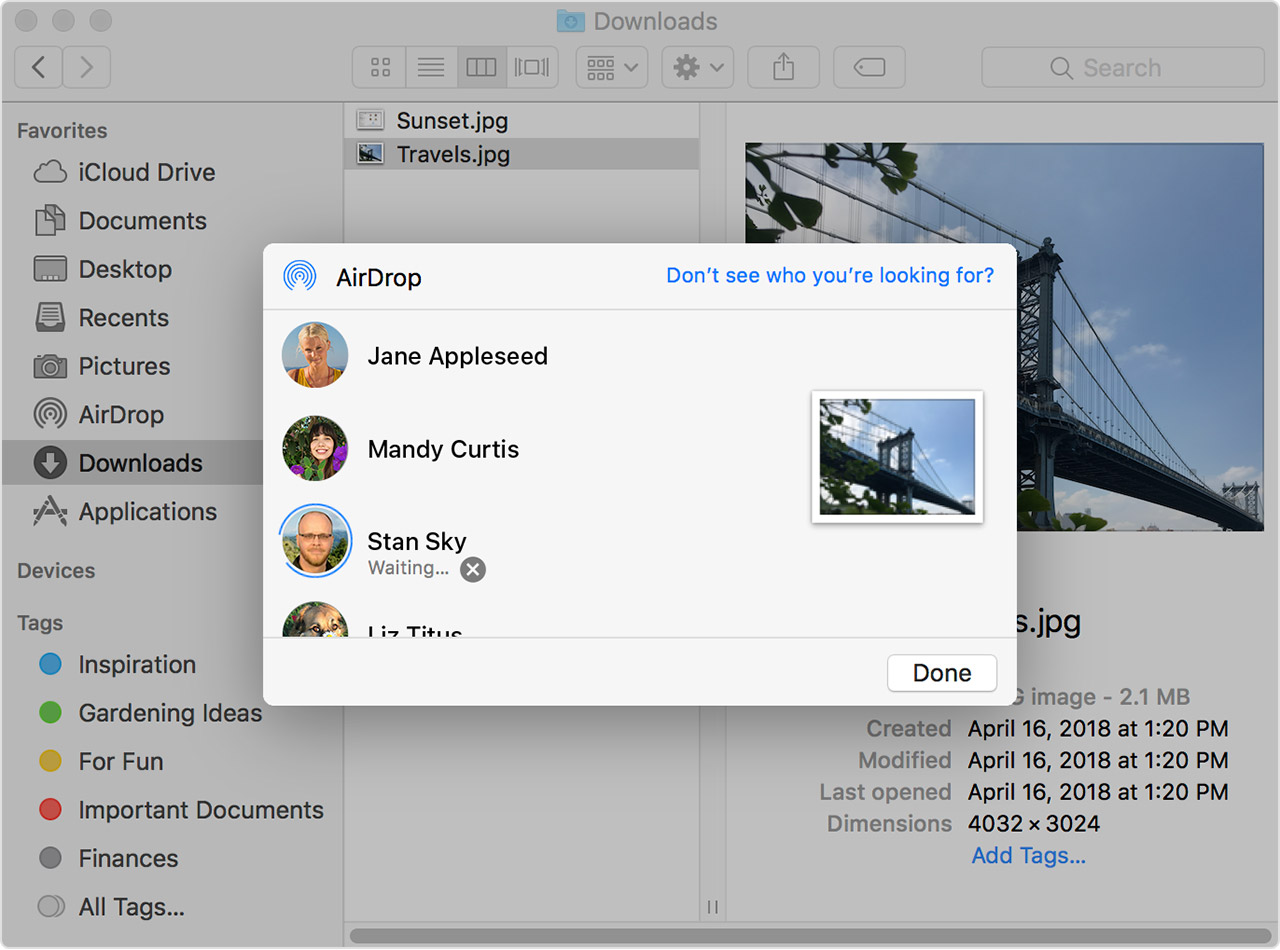Where Can I Find How My Mac Is Known For Air Drop
As the screenshot attests, my mid-2014 13-inch MacBook Air supports AirDrop. Tip: You can also try pressing the Shift + ⌘ + R combo on your keyboard to open AirDrop, if available, as a window in the Finder.
Prior to the release of OS X Yosemite, users looking to transfer files between a Mac and iOS device usually had to resort to a third-party service like Dropbox or use an iCloud-connected app like Messages. AirDrop on OS X Yosemite and iOS 8 provides an easy-to-use solution for transferring files, as users can either drag and drop files from the Mac to iOS or move files from iOS to the Mac using the Share feature. On the Mac, a number of apps like Safari, Preview, Pages, and Contacts support the Share feature. Third-party Mac apps like,, and also feature Share support, allowing content to be transferred via AirDrop.
On iOS, most of Apple's stock apps including Photos, Safari, Notes, and Maps feature Share support. Third-party apps including,, and also support the feature. Before you Start You will need iOS 7 or later and OS X Yosemite in order to use AirDrop to transfer files between a Mac and an iOS device. Using AirDrop to move files between iOS and Mac is supported by all Mac models released in 2012 and later running OS X Yosemite.
I thought I'd try this new Photos app but even with the 'copy images' option deselected the size of the image library is over 40GB when everything is imported! Photos for Mac Speciality level out of ten: 0. Size of Photos library far too large More Less. Apple Footer. Photos Support. All the topics, resources, and contact options you need for Photos. Transfer photos from your iPhone. You can move photos and videos from your iPhone, iPad, or iPod touch to your Mac or PC. And with iCloud Photos, your photos are available on all your devices. Learn how to use the Photos app’s built-in features to keep. Photo app for mac. The Mac is still the best device for serious photo editing, so you need some serious photo editing apps to make an impact. The built-in Photos app on Mac offers several useful photo editing tools. You can crop, adjust lighting and color, set the white balance, add filters, remove unwanted blemishes, and a few more things. When you sign up for iCloud, you automatically get 5GB of free storage for your iOS backups, photos, videos, documents, and apps. When you turn on iCloud Photos, the Photos app lets you know if you need more space to upload your library.
You can confirm that your Mac is compatible with AirDrop by clicking the Finder icon in the Dock and clicking the 'Go' icon in the Menu Bar. If AirDrop is not listed as an option, then your Mac is not compatible with the feature. AirDrop between a Mac and an iOS device also requires an iPhone 5 or later, iPad 4 or later, iPad mini, or fifth-generation iPod touch. Apple notes that AirDrop users should ensure that devices being used are within 30 feet of each other. If you have a firewall enabled on your Mac, navigate to Menu Bar -> Apple -> System Preferences -> General -> Security & Privacy -> Firewall -> Firewall Options and ensure that 'Block all incoming connections' is not checked.

Keep in mind that it is not required for both devices to log into the same iCloud account to use AirDrop, but doing so offers the benefit of transferring files through AirDrop automatically without the need to approve each transfer. Files transferred between devices logged into different iCloud accounts will need permission to accept file transfers. Both iOS devices and Macs must be powered on and not locked in order to make AirDrop file transfers. Turn on Wi-Fi on your iPhone (Settings -> Wi-Fi) and Mac (Menu Bar -> Wi-Fi -> Turn Wi-Fi On. AirDrop will still work between the Mac and an iOS device even if both are using different Wi-Fi networks.
Where Can I Find How My Mac Is Known For Air Airdrop
Turn on Bluetooth on your iPhone (Settings -> Bluetooth) and Mac (Menu Bar -> Apple -> System Preferences -> Bluetooth -> Turn Bluetooth On). Turn on AirDrop on your iPhone (Slide up to access Control Center -> AirDrop -> Choose 'Contacts Only' or 'Everyone') and Mac (Finder -> Menu Bar -> Go -> AirDrop -> Click 'Allow me to be discovered by:' -> Choose 'Contacts Only' or 'Everyone'). You may now begin using AirDrop to transfer files between a Mac and an iOS device. To test it out, go to the AirDrop menu in Finder and notice that your iOS device is represented by circle. Drag and drop a file onto the circle, and your iOS device will prompt you to accept the file.  You can also transfer files from the Mac to an iOS device using apps that have Share feature built-in.
You can also transfer files from the Mac to an iOS device using apps that have Share feature built-in.
Comments are closed.